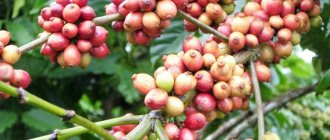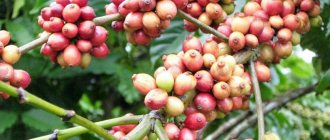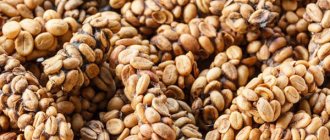Coffee is loved very much for its special properties. Analysis of the coffee market reflects the undying interest in this delicacy.
The global coffee market is replete with innovations: decoupages, various mixtures of your favorite delicacy. In eastern countries where there is a ban on alcohol, this delicacy is an integral part of any celebration. In Russia, when autumn comes, the demand for grains also increases, because everyone knows that the drink not only invigorates, but also creates a feeling of slight euphoria. By 2017-2018, the world coffee market is distinguished by its unique stability.
From statistical data reflecting the demand for this product among representatives of this industry in Europe and America, it is clear that this drink is slightly inferior to competition with cheaper, but low-quality types of liquids. However, in Russia these indicators are increasing: grain has become more attractive compared to instant.
World coffee market
Of the few most advanced variations of beans (Coffea arabica and Coffea canephora Pierre ex Froehn), about 70% Arabica and 30% Robusta are created on the world stage. A few more percent are allocated to exclusive varieties and mixtures inaccessible to the average person.
Many countries are engaged in the production and processing of grains. Now there are about 65 of them. Brazil can be considered the main supplier at present, as before. Its part accounts for about 40% of global flows. There are about 4 million fruit-bearing trees in this country, and up to 57% of the country's total harvest can be harvested on 51 hectares.
World production
| Top Ten Green Coffee Producers - 2011 (millions of metric tons) | |
| Brazil | 2.70 |
| Vietnam | 1.28 |
| Indonesia | 0.63 |
| Colombia | 0.47 |
| Ethiopia | 0.37 |
| Peru | 0.33 |
| India | 0.30 |
| Honduras | 0.28 |
| Mexico | 0.25 |
| Guatemala | 0.24 |
| Total in the world | 8.46 |
| Source: Food and Agriculture Organization of the United Nations (FAO) [1] | |
In 2009, Brazil was the world leader in green coffee production, followed by Vietnam, Indonesia, Colombia and Ethiopia.[6] Arabica coffee beans are grown in Latin America, East Africa, Arabia or Asia. Robusta coffee beans are grown in West and Central Africa, throughout Southeast Asia, and to some extent in Brazil.[7]
Beans from different countries or regions can usually be distinguished by taste, aroma, body, acidity and girth (texture).[8] These flavor characteristics depend not only on the region where the coffee is grown, but also on genetic subspecies (cultivars) and processing.[9] Varieties are usually known by the region in which they are grown, such as Colombian, Java and Kona.
Varieties of grains on the world stage: Arabica and Robusta
Arabica is preferable to Robusta; it is famous for its exceptional sophistication, which is why this type is very popular among the inhabitants of our planet. Arabica trees are very capricious, they require special care and climate: they feel good only in the highlands, they are more susceptible to diseases, and they are often attacked by pests. The optimal altitude for growing Arabica is 2000-2200 meters above sea level. Ecuador is considered the highest mountainous region for growing Arabica. There, fruit trees grow at an altitude of 2700-2900 m, and the grains are known for their good quality and exquisite taste.
Robusta is not so demanding to grow; this variety can grow well at an altitude of up to 700 m. The main suppliers of robusta can be considered India, Africa and other tropical regions of our planet. Robusta is more complex than Arabica in its composition: it contains more caffeine, and therefore, it is more often used to prepare strong drinks and mixtures. This variety is distinguished by its low price.
To get 1 kilogram of fried and ready-to-eat product, about 4.5 thousand fresh grains are used. Moreover, one plant in Brazil produces about 2 thousand grains per year.
The future of coffee
Growing good coffee is becoming increasingly difficult as global temperatures rise. For the future good and continuous growth of coffee beans, it is very important to find new and hybrid blends of coffee beans.
Several studies and research missions have discovered wild coffee species growing off the coast of Ivory Coast and parts of Sierra Leone, which could be the answer to our coffee production problems. Coffee from these coffee plants tasted similar to the famous Arabica beans and also grew at higher temperatures.
While the future of coffee production around the world is somewhat uncertain, our collective love for our morning cup of joe will spur innovative solutions even in the face of climate change.
And that’s all for today about the leaders of coffee producers among the countries of the world. I hope the article was useful to you. Share the article on social networks and instant messengers and bookmark the site. Good luck and see you again on the pages of the Tyulyagin !
- 5
Shared
Coffee market in Russia
At the moment, the coffee market in Russia is not yet fully formed. The economic and, consequently, the trade crisis of the 90s is still alive in memory. Then not only Russia found itself in a difficult economic situation, but prices all over the world also increased, including for grains and their processed products. Conducting this type of business was also caused by a whole range of problems in technical equipment and delivery to customers.
Today we see increased purchasing power. The delicacy has become popular and accessible to all segments of the population.
Back in 2015, the Russian Federation signed an agreement with the famous International Coffee Organization (IOC). This pushed manufacturers to improve the quality of finished raw materials, and also resulted in a reduction in the costs of importing and packaging them. This economic event gave impetus to the merger of Russian trade turnover with global trade.
Specialty coffee industry
There are a number of special terms to describe the relationship between a specialty roaster and the producer and sellers of a particular coffee.
The designation Relationship Coffee indicates a long-term collaboration between the farmer and the roaster, usually dictated by the desire to improve quality and establish a stable price for the product. For such cooperation to be effective, the roaster needs to purchase coffee in large quantities.
Direct Trade is a new term that certifies that roasters have purchased their coffee directly from the farmer and not from an importer, exporter or other third party. The disadvantage of this system is that it underestimates the role of buyers and suppliers in the coffee industry, unfairly exposing them as intermediaries who take away part of the farmer's income. This system will only be viable and can make a difference if roasters begin to purchase large volumes of beans.
The Fair Trade designation indicates that the purchase was made under transparent conditions, the origin of the grain can be easily traced and a high and fair price was paid for it. There is no special certification that would attest to the ethical component of the purchase, but those who purchase under these conditions do so solely with good intentions. A third party may be involved in the purchasing process, but is considered to take a share of the profits. The term is used infrequently, only in those rare cases when a coffee shop visitor wonders whether the coffee was purchased on fair terms.
The idea behind these buying and selling models is that the roaster must know everything about the origin of the beans in order to avoid unnecessary intermediaries and give a price that would encourage the production of a higher quality product. However, these models have certain flaws. Without third-party confirmation, it is very difficult to determine whether the roaster actually purchased the coffee as they claim. Some roasters purchase beans from importers and brokers, from whom they obtain information about the origin of the beans, and they themselves claim that they buy coffee directly from the farmer.
In addition, the farmer has no guarantee that the roaster will cooperate with him on a regular basis, because some buyers simply look for the best beans every year again.
Worldwide requests and offers
As of 2022, the market structure has changed dramatically. If you look back at 2001, you will notice the following trends:
- Compared to 2001, in 2022 the demand for instant products has decreased. This is explained by rising wages among Russians, as well as effective advertising and the proven benefits of grain. If in 2001 a survey showed that 86% of respondents prefer instant drinks, while the same figure has now dropped to 49% and continues to decline.
- In 2022, the approximate consumption of this delicacy in Russia was 250,000 tons, and it also continues to rise.
- There are about 2 kilograms of these products per year per citizen.
- The record holders for drinking are citizens of Finland and Denmark, where the consumption of the drink per year per person is 12 kilograms! This figure in Europe is slightly less - only 8 kg per person, which is also much more than in Russia.
- Russian grain lovers are also divided into two groups: 37% of Russians buy grain, and the rest buy already ground grains.
- Since the coffee market in Russia is only growing, our citizens have become better aware of the varieties of beans, as well as the countries that produce them.
- A survey conducted in 2022 in Moscow showed that: 90% prefer the drink for breakfast, 45% during the day, in the evening the figure drops to 20%, and at night 3-5% of respondents drink this product.
- According to the same survey, Muscovites prefer to prepare the drink at home (95%), some drink the drink at work (45%), the rest buy a treat in a cafe (20%), another small group prefers to treat their guests (19%). At the same time, a considerable part of people take a glass with them when they go for a walk (10%).
It is clear that there are many coffee-producing countries, but everyone is interested in the leaders. Some Guyana produces about 600 tons - dust, dandruff, not worth attention. But which country is the largest producer? Which country has the best coffee? By the way, there is no answer to this question. Finally, which country is the birthplace of coffee? About this right away - Ethiopia.
Coffee is a berry and for ripening it requires certain climatic conditions, in particular, more or less uniform year-round heat with an average temperature of at least +15. Therefore, all coffee-growing countries are concentrated in the tropical climate zone of the Earth, simply in the tropics. With this knowledge, look at the map.
For the sake of accuracy, this is a ranking of coffee exports, but these data generally correlate well with production, with the exception of China and Malaysia, which do not grow coffee but are large exporters. Infographics: Cbahrs by persons. CC BY-SA 4.0
It turns out that there are about fifty countries in the world where coffee grows. They are located in Central and South America, Africa and Southeast Asia.
Top 20 leading countries in coffee production (in tons, based on data for 2022)
| A country | Production 2020 | Change 2020/2019 |
| 1. Brazil | 3 804 000 | +2,3% |
| 2. Vietnam | 1 740 000 | -4,9% |
| 3. Colombia | 858 000 | +1,4% |
| 4. Indonesia | 717 000 | +3,0% |
| 5. Ethiopia | 442 500 | +0,4% |
| 6. Honduras | 366 000 | +2,8% |
| 7. India | 342 000 | +14,3% |
| 8. Uganda | 337 200 | +2,0% |
| 9. Mexico | 240 000 | +0,4% |
| 10. Peru | 227 640 | -0,9% |
| 11. Guatemala | 225 000 | +4,0% |
| 12. Nicaragua | 159 000 | -8,1% |
| 13. Ivory Coast | 106 500 | -8,0% |
| 14. Costa Rica | 46 500 | -1,5% |
| 15. Tanzania | 54 780 | -0,9% |
| 16. Kenya | 45 000 | -8,1% |
| 17. Papua New Guinea | 40 980 | -6,7% |
| 18/19. Laos | 36 000 | -6,7% |
| 18/19. El Salvador | 36 000 | -9,2% |
| 19/20. Venezuela | 30 000 | -9,1% |
| 19/20. Thailand | 30 000 | -3,2% |
A couple of notes on the table:
- This is the most recent ranking for 2022, summary statistics based on raw data from the International Coffee Organization as of May 2021.
- This is data on coffee production, not on exports - see the example above with China and Malaysia. By the way, it is by the presence of China in the top coffee-producing countries that you can distinguish an article by a mediocre copywriter from the most accurate information from 101 coffee machines











